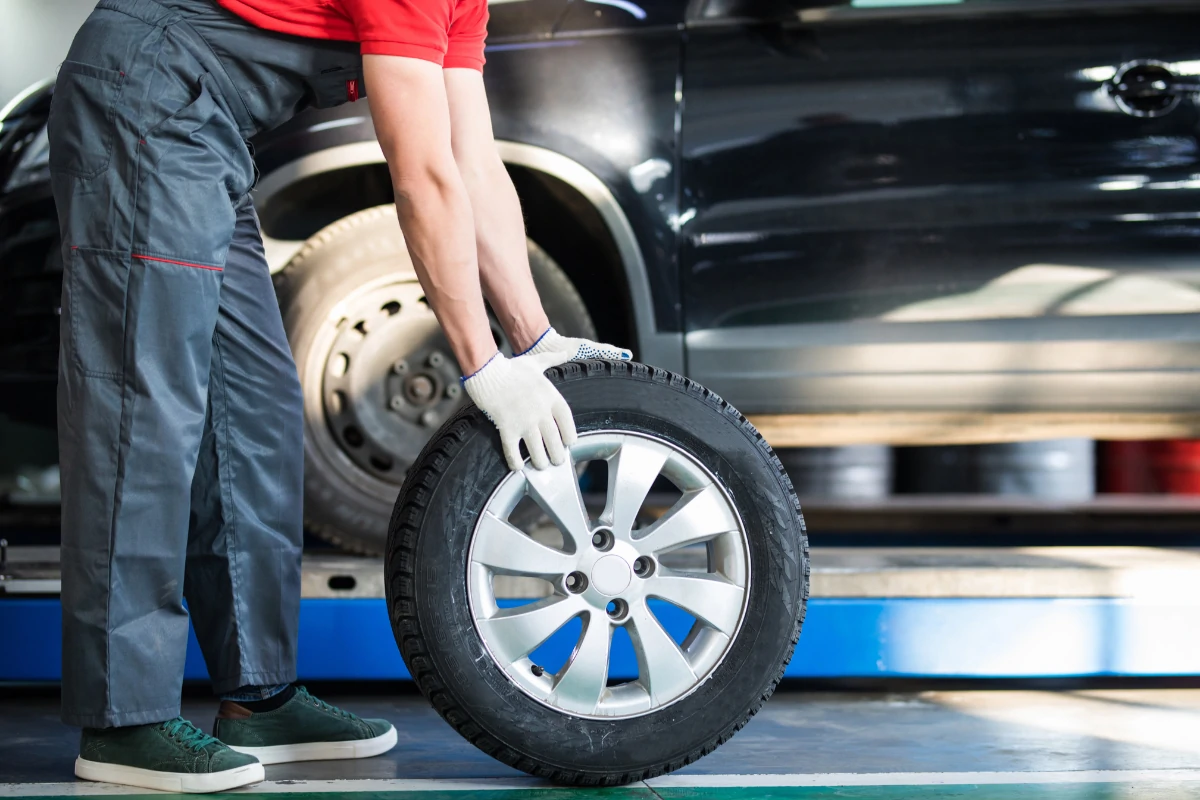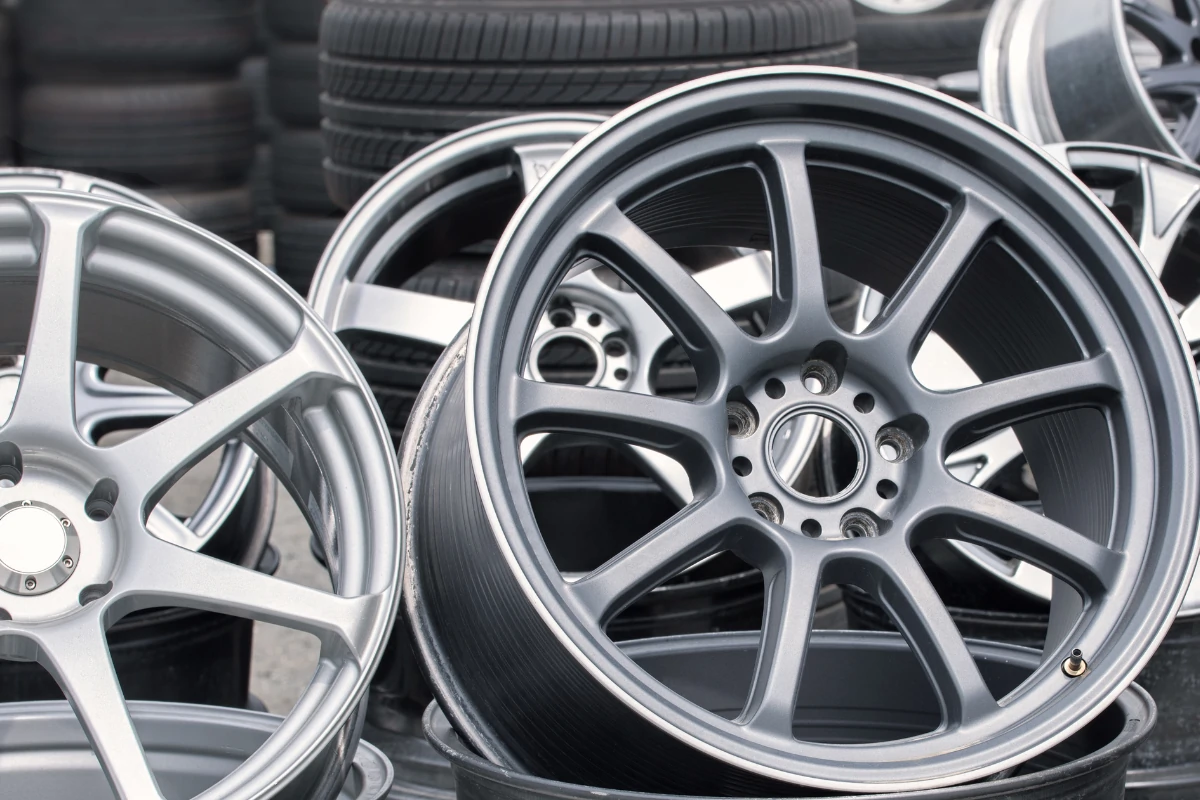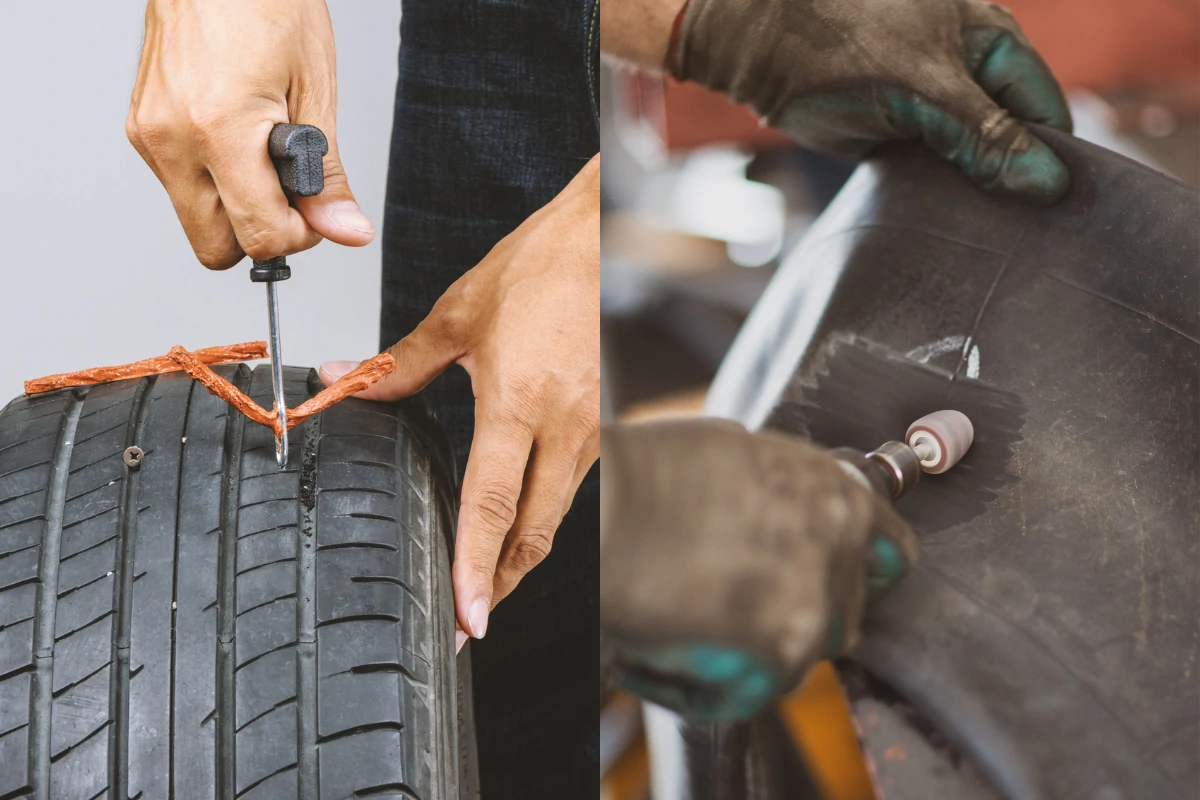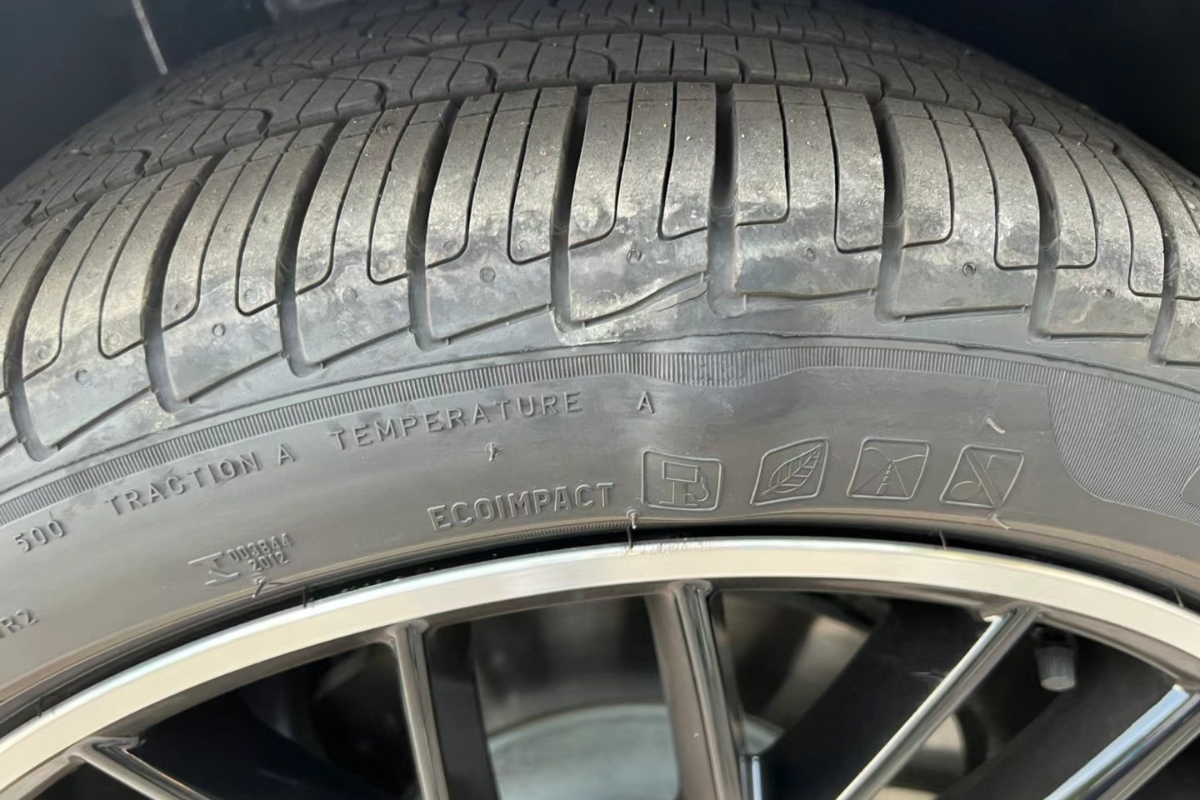Tire rotation is necessary to make sure your tires wear evenly and last longer. Despite its importance, many people are unaware of the proper pattern to rotate tires or how often this should be done.
In this guide, I’ll provide you with all the necessary information about tire rotation to keep your tires in top condition. After finishing reading this article, you’ll know:
- What tire rotation is and why it is important
- How often you should rotate tires
- Different tire rotation patterns
- How to rotate tires at home
- ……
Table of Contents
What is Tire Rotation?
Tire rotation is the process of switching the position of each tire, commonly from front to back or side to side, depending on the type of rotation pattern recommended by the vehicle manufacturer.
Why Is Tire Rotation Necessary
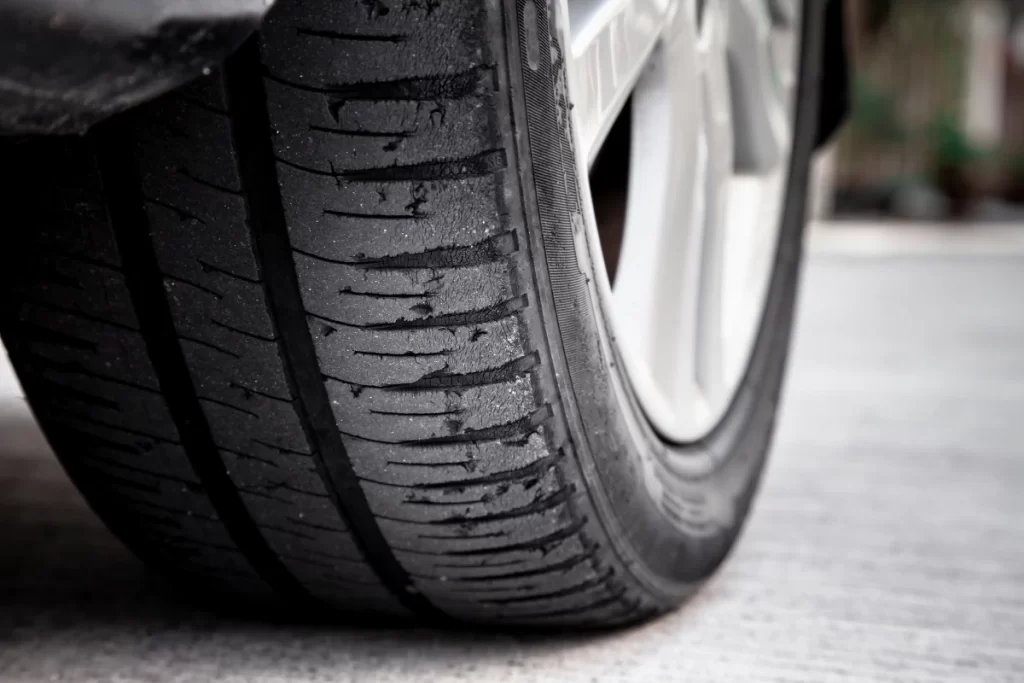
A tire tends to wear unevenly owing to aspects including weight distribution, braking patterns, tire pressure and road conditions.
For front-wheel drive vehicles, for example, front tires typically wear more on the outer edges, while the rear tires may wear more evenly across the tread. This uneven wear can lead to decreased traction, stability, and handling capabilities, potentially compromising your safety.
Rotating your tires on a regular basis can help ensure that the wear is distributed evenly among all four tires, reducing the risk of one tire wearing out faster than the others. This can maximize their tread life and save money by avoiding premature tire replacements.
When and How Often to Rotate Tires
The recommended tire rotation intervals may vary depending on several elements, such as tire types, vehicle types, and driving conditions. Here are some general guidelines that can assist you in figuring out the right time to rotate your tires:
Mileage-Based Rotation
Most vehicle manufacturers suggest rotating tires every 4,000 to 8,000 miles. This interval is suitable for standard passenger cars and SUVs. However, it’s crucial to refer to your owner’s manual for recommended intervals.
Time-Based Rotation
If you rarely drive your vehicle or cover substantial mileage, it’s still important to rotate your tires regularly. Even if your tires have yet to reach the recommended mileage interval, consider rotating them every six months or so to prevent uneven wear and maintain balance.
Performance and Specialty Tires
High-performance tires and specialty tires, such as those used in sports cars or off-road vehicles, may require more frequent rotation. These tires commonly feature distinct tread patterns and materials that wear differently.
Uneven Wear Patterns
Pay attention to any signs of uneven tire wear, such as bald spots. If you notice uneven wear, it’s crucial to have your tires rotated as soon as possible, regardless of the recommended intervals. Ignoring uneven wear can lead to reduced traction, compromised handling, and potential safety hazards.
Tire Rotation Patterns
Factors to consider when selecting the optimal tire rotation pattern for your vehicle:
1. What is the type of your tires? Directional or non-directional tires?
A directional tire is a specialized tire that features a unique tread pattern optimized for superior performance in one specific direction. As a result, this design restricts the tire’s rotation to a single direction, preventing it from being rotated from one side of a vehicle to the other.
2. What is your vehicle’s drive system? Front, rear, all, or four-wheel drive?
Different drive systems can have different effects on tire wear. For example, front-wheel drive vehicles tend to wear out their front tires more quickly, so a rotation pattern that prioritizes moving the front tires to the back can help even out wear.
3. Is your spare tire full-size or temporary?
Full-size spare tires are designed to match the size of the tires on your vehicle and can be safely used for extended periods.
On the other hand, temporary spare tires, commonly known as donut tires, are smaller than regular tires and are intended for a temporary solution until a proper replacement can be installed. Donut tires are not suitable for long-term use and can negatively impact the handling and stability of a vehicle.
4. Do you have staggered fitment tires?
Staggered fitment tires refer to a configuration in which the front and rear tires have different sizes and/or offsets. It is commonly seen in high-performance vehicles and sports cars. This configuration requires careful consideration during tire rotation.
Here are three tire rotation patterns recommended by The Tire and Rim Association, Inc., based on different types of vehicles and tire setups:
For non-directional same-size tires:
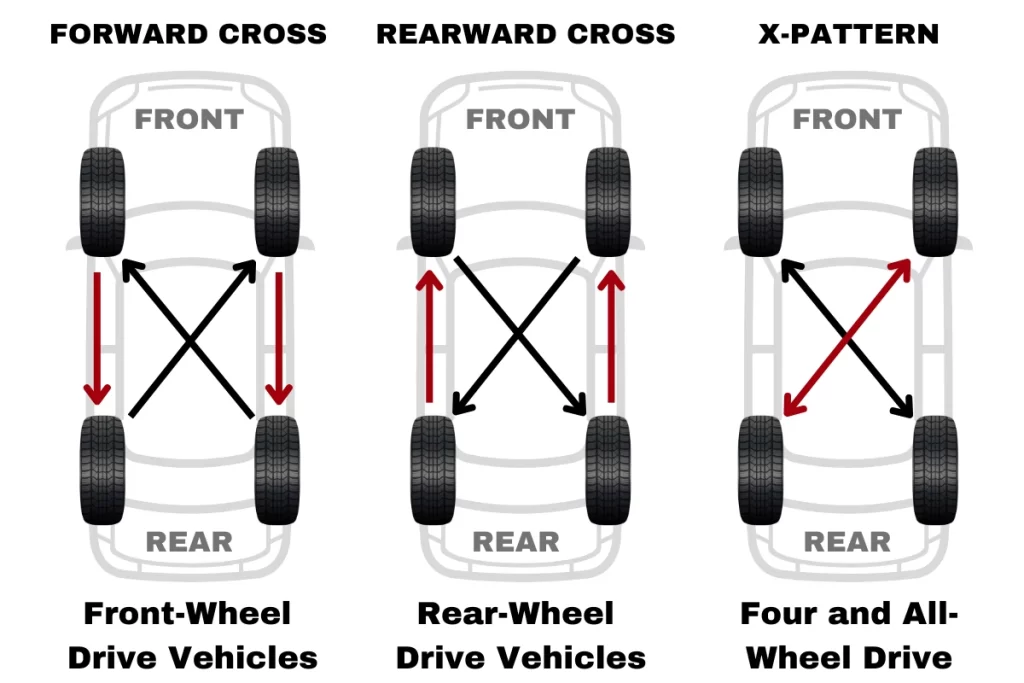
Forward Cross
The front tires are moved directly backward while the rear tires are moved diagonally forward. This pattern is most suitable for front-wheel drive vehicles.
Rearward Cross
Rearward cross involves a straight-forward movement of the rear tires and a diagonal rearward movement of the front tires. This pattern is recommended for rear-wheel drive vehicles.
X-Pattern
The X-pattern is optimally suited for vehicles with four and all-wheel drive vehicles. This pattern involves a diagonal movement of all tires, whereby each tire is switched from one axle to the opposing one and relocated from one side of the vehicle to the other.
There are two additional rotation patterns available for performance tires and wheels:
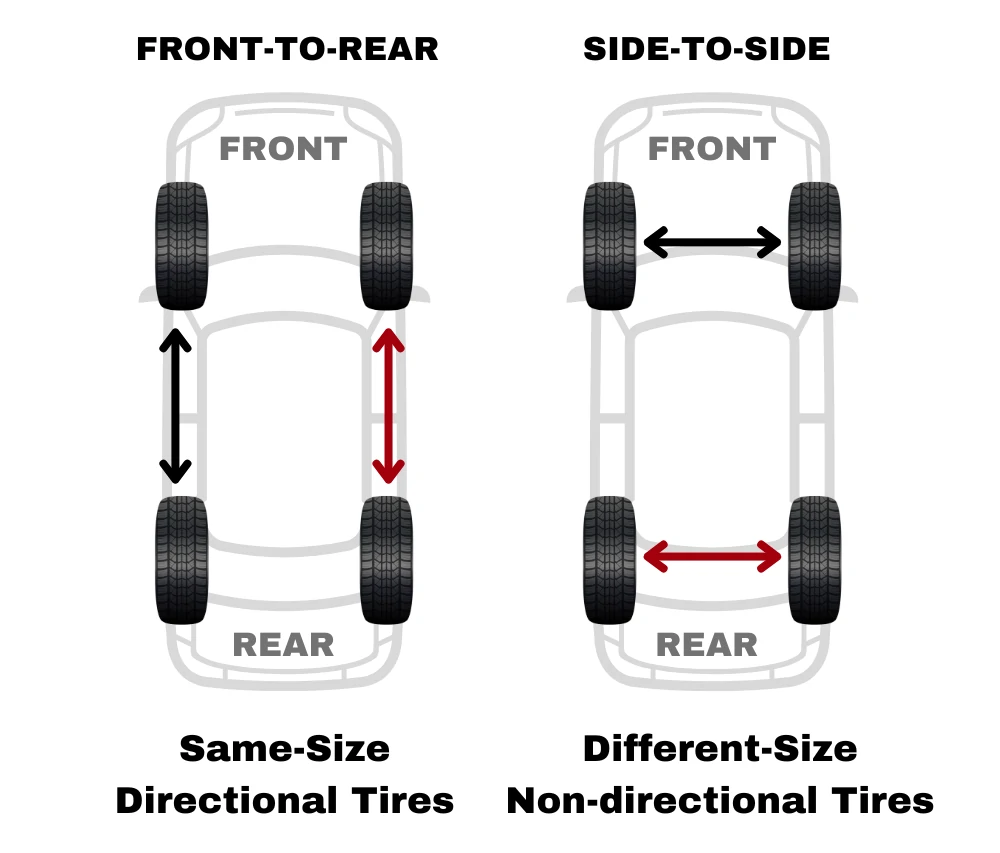
Front-To-Rear
The front tires are straightly rotated to the back, while the rear tires are relocated to the front. This pattern is particularly effective for vehicles with same-size directional tires.
Side-To-Side
The side-to-side pattern refers to switching tires from the left side of the vehicle to the right and vice versa. It is recommended for vehicles that have non-directional different-size front and rear tires.
If you own a vehicle with a full-size spare tire (not a donut tire), it’s important to consider including it in your regular tire rotation schedule.
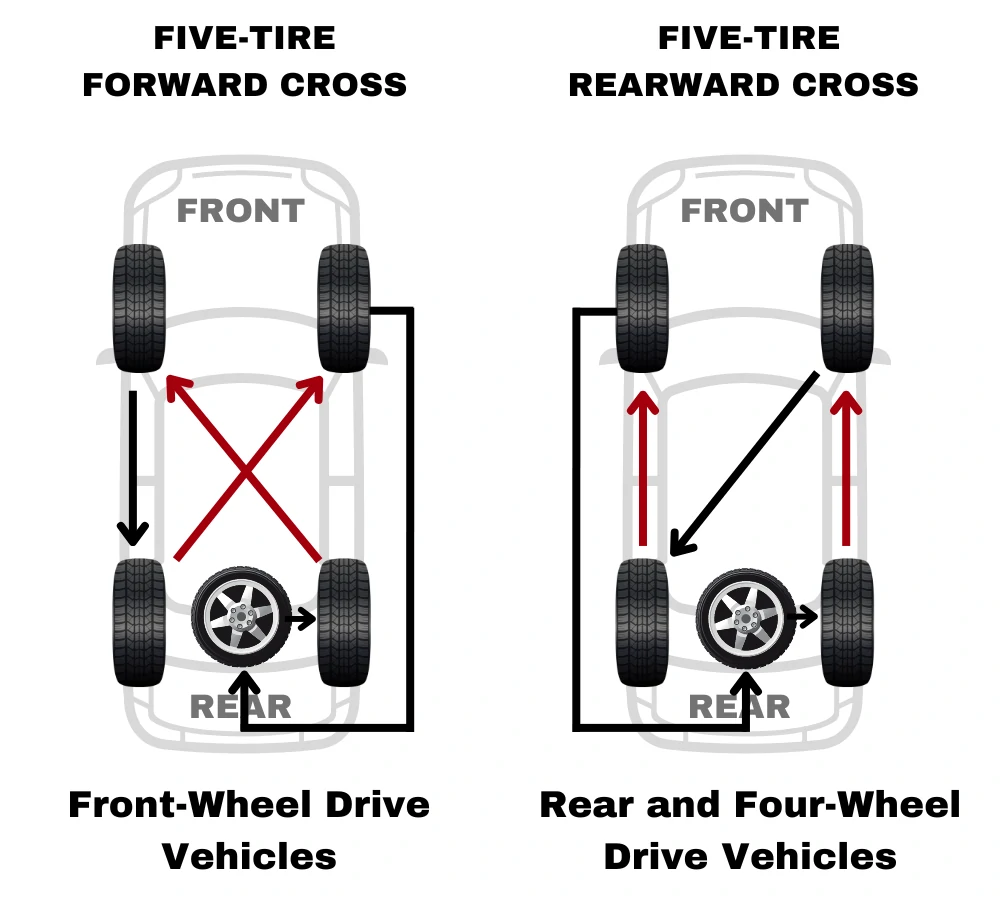
Five-Tire Forward Cross
For front-wheel drive vehicles, with a full-size matching spare tire, a forward cross pattern is recommended.
Five-Tire Rearward Cross
For rear-wheel or four-wheel drive vehicles, with a full-size matching spare tire, a rearward cross pattern is recommended.
Professional Tire Rotation Cost
The cost of tire rotation can vary depending on multiple factors, such as location, the type of vehicle, and the service provider. If you purchased your tires from certain stores, some of them offer a period of free tire rotation service.
On average, you can expect to pay between free and $50 for a tire rotation. It’s important to note that this cost usually doesn’t include additional services such as balancing or alignment, which may incur extra charges.
For an accurate price estimate, we recommend contacting your local tire service center or checking their website for specific pricing information.
Here is a list of tire rotation costs at well-known service shops:
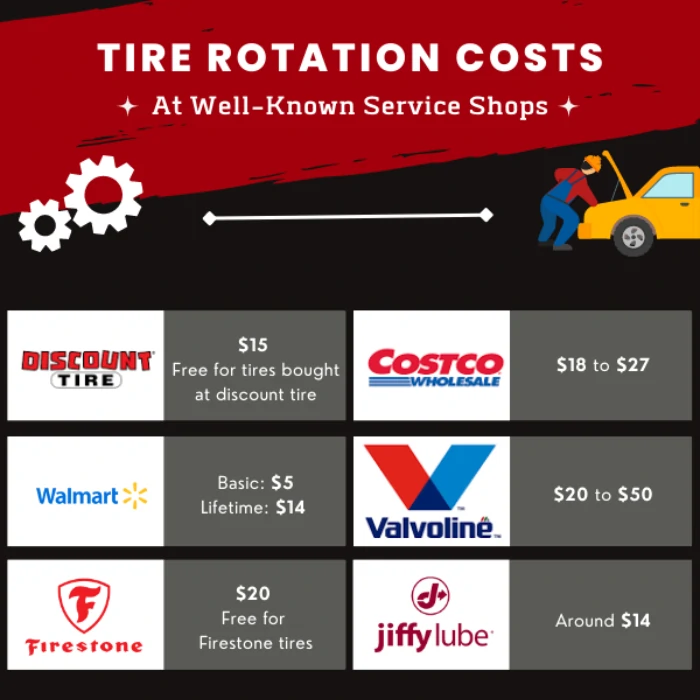
| Discount Tire | $15 (Free for tires bought at discount tire) |
| Walmart | Basic: $5; Lifetime: $14 |
| Firestone | $20 (Free for Firestone tires) |
| Costco | $18 to $27 |
| Valvoline | $20 to $50 |
| Jiffy Lube | Around $14 |
How to Rotate Tires at Home
Rotating your car’s tires at home can save you money, while also providing you with the satisfaction of completing a DIY project.
Before starting, ensure you have the necessary tools, including a lug wrench, a jack, and a set of jack stands. It is also vital to consult your owner’s manual for specific instructions and recommended rotation patterns.
Step-by-Step Instructions
1. Park your vehicle on a flat and level surface.
2. Loosen the lug nuts on each wheel using a lug wrench, and ensure that they are not fully removed at this time.
3. Use a jack to lift your vehicle, then place the jack stands securely under the vehicle’s frame.
4. Slowly lower the vehicle onto the jack stands and remove the lug nuts fully.
5. Remove each tire with care and closely inspect it for any indications of wear or damage.
6. Follow the recommended rotation pattern in your owner’s manual, typically a forward or rearward cross pattern.
7. Tighten the lug nuts to the manufacturer’s recommended torque specification with a lug wrench.
8. Repeat these steps for each tire, and you’re done!
The Bottom Line
Tire rotation is a vital maintenance task that should not be ignored. Regularly rotating your tires can help ensure better safety on the road by improving traction, preventing uneven wear, and extending the lifespan of your tires.
Following the manufacturer’s recommendation for tire rotation intervals, you can avoid costly repairs, reduce the risk of blowouts or accidents, and enjoy a smoother, more comfortable ride.
So, if you haven’t already, it’s time to schedule a tire rotation for your vehicle!

